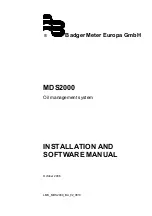
Smart Machine Smart Decision
SIM7200-PCIe_ Hardware_Design _V1.01
24
2016-05-19
Table 9: USB port Specification
Port Name
Description
SimTech HS-USB AT Port
Module could be controlled by sending AT command via AT port.
SimTech HS-USB
Diagnostics
Module could be debugged by grabbing log through Diagnostics port.
SimTech HS-USB NMEA
NMEA information could be grabbed from the NMEA port.
SimTech HS-USB PCM
Voice
Voice call could be achieved through PCM Voice port.
SimTech HS-USB Modem
Module could transfer data through Modem.
Note: SimTech HS-USB PCM Voice function is under development.
4.3.2
Firmware Update
If users need to upgrade through USB port, it is necessary to power on SIM7200 first, and then connect
USB_DP, USB_DN, GND to host device.
4.3.3
High-speed USB Layout Guide Lines
This section summarize the guidelines for designing controlled-impedance, high-speed USB PCBs to comply
with the USB specification.
The impedance could be controlled to 90
Ω
Route the high-speed clock and high-speed USB differential signals with minimum trace lengths.
Route the high-speed USB signals on the plane closest to the ground plane
Route the high-speed USB signals using a minimum of vias and corners.
When it becomes necessary to turn 90°, use two 45° turns or an arc instead of making a single 90° turn. This
reduces reflections on the signal traces by minimizing impedance discontinuities.
Route the high-speed USB signals using a minimum of vias and corners. This reduces signal reflections and
impedance changes.
Do not route USB traces under or near crystals, oscillators, clock signal generators, switching regulators,
magnetic devices or IC’s that use or duplicate clock signals.
Avoid stubs on the high-speed USB signals because they cause signal reflections. If a stub is unavoidable,
then the stub should be less than 200 mils.
Route all high-speed USB signal traces over continuous planes (VCC or GND), with no interruptions. Avoid
crossing over anti-etch, commonly found with plane splits.
4.4
USIM Card Interface
SIM7200 supports one USIM card, and the USIM interface complies with ISO/IEC 7816-3 standard. Both 1.8V
and 3.0V USIM card are supported. The USIM interface is powered from an internal regulator in the module, and
it supports USIM card detecting and hot swap function.
Both 1.8V and 3.0V USIM card are supported. The USIM interface is powered from an internal regulator in the
module, and supports USIM card detecting and
hot swap function.
It is recommended to use an ESD protection component such as PHILIPS (
www.ohilips.com
) IP42220CZ6, the
USIM peripheral circuit including resistors and ESD TVSs should be close to the USIM card socket. The
















































